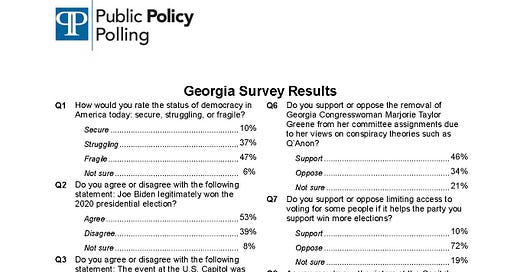Survey Finds Republican Voters' Views On Democratic "Fragility" May Contribute to Rise in Radicalism Within Party-Increased Support of Anti-Democratic Attitudes/Policies.
Data Suggests Dark Days Ahead For American Democracy.
The closing months of the 2020 election and the fiasco that followed leaves no doubt as to the precarious status of American democracy as it comes out of Donald Trump’s presidency. Despite idiosyncratic elements, Trump’s win in 2016 and the four years that followed have greatly accelerated the problem of hyperpartisanship and polarization.
The issue and
Keep reading with a 7-day free trial
Subscribe to The Cycle- On Substack to keep reading this post and get 7 days of free access to the full post archives.



